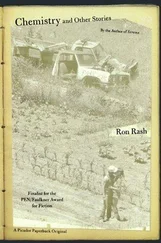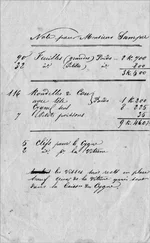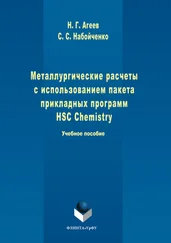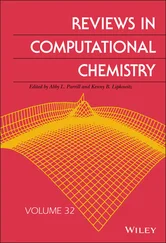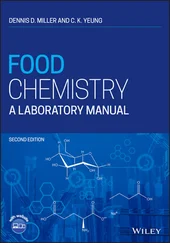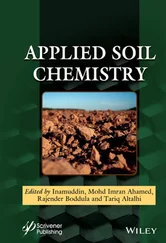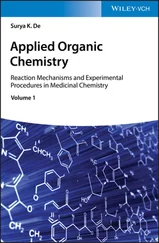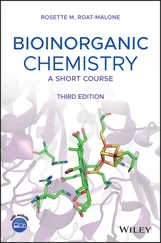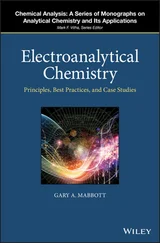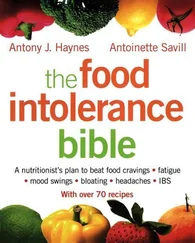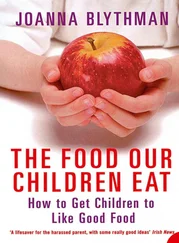Food Chemistry
Здесь есть возможность читать онлайн «Food Chemistry» — ознакомительный отрывок электронной книги совершенно бесплатно, а после прочтения отрывка купить полную версию. В некоторых случаях можно слушать аудио, скачать через торрент в формате fb2 и присутствует краткое содержание. Жанр: unrecognised, на английском языке. Описание произведения, (предисловие) а так же отзывы посетителей доступны на портале библиотеки ЛибКат.
- Название:Food Chemistry
- Автор:
- Жанр:
- Год:неизвестен
- ISBN:нет данных
- Рейтинг книги:5 / 5. Голосов: 1
-
Избранное:Добавить в избранное
- Отзывы:
-
Ваша оценка:
- 100
- 1
- 2
- 3
- 4
- 5
Food Chemistry: краткое содержание, описание и аннотация
Предлагаем к чтению аннотацию, описание, краткое содержание или предисловие (зависит от того, что написал сам автор книги «Food Chemistry»). Если вы не нашли необходимую информацию о книге — напишите в комментариях, мы постараемся отыскать её.
A unique book detailing the impact of food adulteration, food toxicity and packaging on our nutritional balance, as well as presenting and analyzing technological advancements such as the uses of green solvents with sensors for non-destructive quality evaluation of food.
Audience Food Chemistry: The Role of Additives, Preservatives and Adulteration
Food Chemistry — читать онлайн ознакомительный отрывок
Ниже представлен текст книги, разбитый по страницам. Система сохранения места последней прочитанной страницы, позволяет с удобством читать онлайн бесплатно книгу «Food Chemistry», без необходимости каждый раз заново искать на чём Вы остановились. Поставьте закладку, и сможете в любой момент перейти на страницу, на которой закончили чтение.
Интервал:
Закладка:
Table of Contents
1 Cover
2 Title Page Scrivener Publishing 100 Cummings Center, Suite 541J Beverly, MA 01915-6106 Publishers at Scrivener Martin Scrivener ( martin@scrivenerpublishing.com ) Phillip Carmical ( pcarmical@scrivenerpublishing.com )
3 Copyright
4 Preface
5 1 Food Chemistry: Role of Additives, Preservatives, and Adulteration 1.1 Introduction 1.2 Categories of Food Colors 1.3 Natural Colors Are Best Over Artificial Colors 1.4 Classification of Food Colorants 1.5 Classification of Food Additives 1.6 Food Spoilage and Preservation 1.7 Preservatives 1.8 Antioxidants 1.9 Oils and Spices 1.10 Introduction to Hurdle Technology 1.11 Adulteration 1.12 Food Safety and Standards Act 1.13 Conclusion References
6 2 Additives and Preservatives Used in Food Processing and Preservation, and Their Health Implication Abbreviations 2.1 Introduction 2.2 Merits and Demerits of Food Additives and Preservatives 2.3 Types of Food Additives and Preservatives 2.4 Health Effect of Food Additives and Preservatives 2.5 Conclusion References
7 3 Role of Packaging in Food Processing 3.1 Introduction 3.2 State-of-the-Art 3.3 Raw Materials Used in Food Packaging 3.4 Packaging Footprints on Quality, Shelf Life, and Safety of Food 3.5 Prolegomenon on Active and Smart Packaging Systems 3.6 Aseptic Packaging in Food Processing 3.7 The Paradigm in Strategies for Improvement of Food Packaging 3.8 Integration of Nanotechnology to Ameliorate Food Packaging 3.9 Life Cycle Assessment (LCA) 3.10 Deciphering the Challenges for Sustainable Food Packaging 3.11 Conclusion and the Way Forward Acknowledgement References
8 4 Laws Impacting Chemicals Added to Food 4.1 Introduction 4.2 Functions of Food Additives 4.3 Classification of Food Additives 4.4 Classification Based on Primary and Secondary Technological Roles—Direct and Indirect Additives 4.5 Evaluating the Health Risk of Food Additives 4.6 International Regulations for the Efficacy of Food Additives 4.7 International Laws 4.8 Indian Regulations—Food Safety and Standards Authority of India (FSSAI), Additives Regulations (Regulation 3.1) 4.9 Safety Assessment: Redbook’s Principles of Safety Evaluation 4.10 Levels of Concern for Direct Food Additives 4.11 Threshold Regulation Exemption for Indirect Food Additives 4.12 Estimated Daily Intakes 4.13 Human Data and Clinical Studies 4.14 GRAS Substances 4.15 European Union Legislation 4.16 Categorization of Food Additives 4.17 Safety Assessment of Food Additives 4.18 Safety Evaluation Process and Authorization 4.19 Use of Food Additives in Food Products 4.20 Labeling Regulations and Guidelines 4.21 Conclusion References
9 5 Detection of Food Adulterants in Different Foodstuff 5.1 Introduction 5.2 Types of Adulteration 5.3 Impact of Adulteration on Health 5.4 Approaches for Adulterant Authentication in Food Materials 5.5 Physical Authentication Techniques 5.6 Application of Biochemical and Analytical Methods in Adulterant Authentication 5.7 Adulterant Identification by Molecular Techniques 5.8 Limitation in Use of Molecular-Based Methods for Adulterant Authentication 5.9 Conclusion References
10 6 Trends of Food Adulteration in Developing Countries and Its Remedies 6.1 Introduction 6.2 Food Fraud in Developing Countries 6.3 Classification of Food Adulteration 6.4 Common Food Adulterants 6.5 Adulteration Remedy Strategies 6.6 Conclusion References
11 7 Food Adulteration and Its Impacts on Our Health/Balanced Nutrition 7.1 Introduction 7.2 Types of Adulteration 7.3 Adulteration in Foods 7.4 Effects of Food Adulteration 7.5 Measures to Mitigate Food Adulteration References
12 8 Natural Food Toxins as Anti-Nutritional Factors in Plants and Their Reduction Strategies Abbreviations 8.1 Introduction 8.2 Anti-Nutritional Factor 8.3 Methods to Reduce Levels of Anti-Nutritional Factors in Foods 8.4 Conclusion References
13 9 Feeding the Future—Challenges and Limitations 9.1 Introduction 9.2 Early Life Nutrition and Healthy Future 9.3 Challenges and Opportunities in Developing the Future Food Systems 9.4 Sustainable Diet for the Future 9.5 Research Trends and Green Food Technologies 9.6 Regulations and Trade 9.7 Conclusion References
14 10 Alternate Food Preservation Technology 10.1 Introduction 10.2 Non-Thermal Preservation Technique 10.3 Novel-Thermal Preservation Technique 10.4 Other Alternate Preservation Techniques 10.5 Hurdle Technology for Preservation of Food 10.6 Irradiation Process for Preservation of Food 10.7 Food Additives for the Preservation of Food 10.8 Conclusion References
15 11 Green Solvents for Food Processing Applications 11.1 Introduction 11.2 Green Solvents 11.3 Synthesis of NADES 11.4 Conclusion and Future Trends References
16 12 Technological Advancement in Food Additives and Preservatives Abbreviations 12.1 Introduction 12.2 Food Additives and Preservatives 12.3 Regulatory Aspects of Food Additives and Preservatives 12.4 Health Concerns of Conventional Food Additives 12.5 Technological Advancements in Food Additives and Preservatives 12.6 Novel Technological Approaches for Enhanced Functionality 12.7 Methods for Food Additives Determination 12.8 Future Prospects 12.9 Conclusion References
17 13 Sensors for Non-Destructive Quality Evaluation of Food 13.1 Introduction 13.2 Different Types of Non-Destructive Methods 13.3 Non-Destructive Quality Testing in Various Food Commodities 13.4 Conclusion References
18 Index
19 End User License Agreement
List of Illustrations
1 Chapter 2 Figure 2.1 Types of food additives. Figure 2.2 Types of sweetener.
2 Chapter 3 Figure 3.1 Life cycle of food packaging. Figure 3.2 Conventional and emerging technologies strategies employed for the fo... Figure 3.3 The global market share of packaging materials [14]. Figure 3.4 Characteristics of active packaging in food applications.Figure 3.5 The framework of dimensions of the food packaging industry of supply ...Figure 3.6 The classification of biopolymers [36].Figure 3.7 Probable harmful effects of exposure of nanoparticles on human health...
3 Chapter 5Figure 5.1 Physical authentication techniques.Figure 5.2 Analytical techniques for food authentication.Figure 5.3 Molecular authentication techniques.
4 Chapter 6Figure 6.1 Potential sources/processes for adulterant entry/contamination into t...
5 Chapter 10Figure 10.1 Overview of MAP packaged minimal processed fresh product.Figure 10.2 Generation of O 3.Figure 10.3 HPP processed food product.Figure 10.4 Different frequencies of ultrasound.Figure 10.5 Operating mechanism of PEF.Figure 10.6 Application of cold plasma in agro-food processing industries.Figure 10.7 Working mechanism of CP.Figure 10.8 Electrical circuit for generation of OMF.Figure 10.9 Operating mechanism of OH.Figure 10.10 Spectrum of electromagnetic wavelength and frequencies.
6 Chapter 11Figure 11.1 New 12 principles of green chemistry postulated by Anastas and Warne...Figure 11.2 Schematic phase diagram of super critical carbon dioxide.
7 Chapter 13Figure 13.1 Schematic diagram of the electronic nose system [14].Figure 13.2 Electromagnetic spectrum.Figure 13.3 Schematic diagram of NMR spectrometer [32].Figure 13.4 Schematic optical diagram of NIR spectrometer.Figure 13.5 Schematic representation of NIR spectroscopy.Figure 13.6 Schematic representation of HSI.Figure 13.7 Schematic representation of an imaging system technique [5].Figure 13.8 Schematic representation of the optical fiber–based setup of diffuse...Figure 13.9 Sound measurement technique using instrumental compression [5].Figure 13.10 Schematic diagram of sensor fusion for assessment of final quality ...Figure 13.11 Scientific principle of non-destructive quality estimation for vege...
List of Tables
1 Chapter 1 Table 1.1 Chemical classification of natural colorants. Table 1.2 Common color and associated food.
Читать дальшеИнтервал:
Закладка:
Похожие книги на «Food Chemistry»
Представляем Вашему вниманию похожие книги на «Food Chemistry» списком для выбора. Мы отобрали схожую по названию и смыслу литературу в надежде предоставить читателям больше вариантов отыскать новые, интересные, ещё непрочитанные произведения.
Обсуждение, отзывы о книге «Food Chemistry» и просто собственные мнения читателей. Оставьте ваши комментарии, напишите, что Вы думаете о произведении, его смысле или главных героях. Укажите что конкретно понравилось, а что нет, и почему Вы так считаете.

